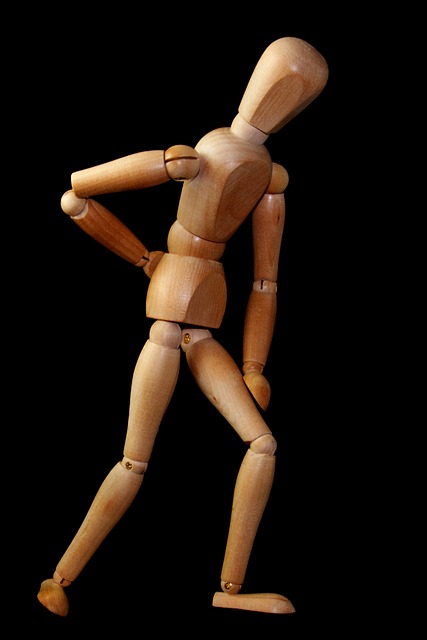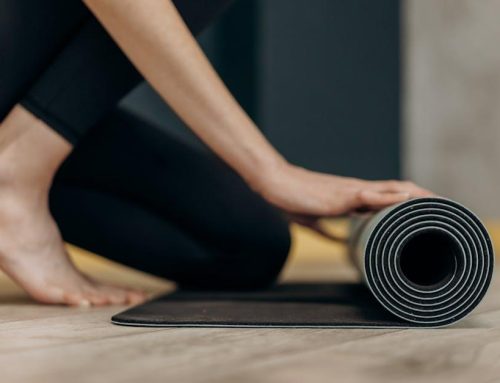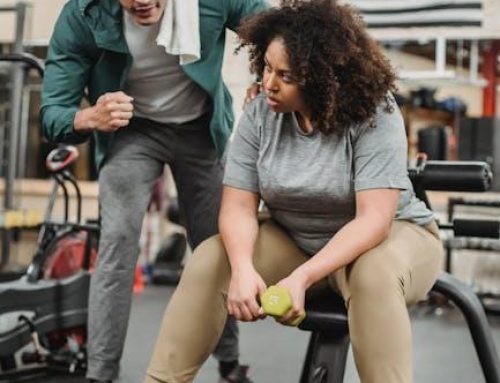Greetings, fellow lifters! Have you ever experienced that agonizing sensation in your lower back after a heavy squat session? Or maybe you’ve felt a sudden stab of pain while deadlifting, making you question why you ever decided to pick up the barbell in the first place. Well, fear not my dear weightlifting brethren, for you are not alone in your plight! Back pain is a common occurrence in the world of heavy lifting, and understanding its origins and solutions is crucial to keep hitting those PRs without enduring unnecessary suffering. So, let’s delve into the intricate world of back pain in weightlifting, shall we? And if you’re currently lying flat on the floor due to a recent incident, don’t worry, we’ll bring the article to you. Grab some ice and let’s get started!
Contents
- 1 1. Introduction: Understanding the Prevalence of Back Pain in Weightlifters
- 2 2. Causes of Back Pain: A Comprehensive Explanation for Weightlifters
- 3 3. Common Injuries from Weightlifting: What You Need to Know
- 4 Common Injuries from Weightlifting: What You Need to Know
- 5 4. Preventing Back Pain: Tips, Tricks and Techniques for Safe Weightlifting
- 6 5. Conclusion: Invest in Your Health and Longevity by Treating Back Pain Right from the Start
- 7 So, What’s the Gist?
1. Introduction: Understanding the Prevalence of Back Pain in Weightlifters
As someone who has lifted weights for years, I can tell you that there are two things every weightlifter has in common: gains and pain. While the former is satisfying, the latter can be a real pain in the back…literally!
But why is back pain so prevalent among weightlifters? Well, let’s start with the fact that weightlifting places a tremendous amount of stress on your spine. When you’re pushing your limits with heavy weights, your spine is subjected to compressive forces that can take a toll over time. Combine that with poor form, and you’ve got a recipe for disaster (and a good dose of icy/hot).
But don’t lose hope just yet! With proper technique, regular stretching, and a bit of common sense, you can avoid becoming another statistic in the back pain game. So, without further ado, let’s dive into the nitty-gritty of back pain in weightlifting and see how we can minimize our chances of joining the hunchback club.
– Keep your core tight during lifts.
– Work on your flexibility and mobility every chance you get.
– Warm-up thoroughly before starting your workout.
Now, I know these tips may seem like common sense, but sometimes we need a reminder (and maybe an elbow in the ribs) to keep us on track. So, while we can’t guarantee that you’ll never feel a twinge in your back again, we can promise that practicing good form and taking care of your spine will keep you lifting (and living) pain-free for years to come.
2. Causes of Back Pain: A Comprehensive Explanation for Weightlifters
Let’s dive into the dreaded causes of back pain, a topic that every weightlifter knows all too well. If you’ve ever felt like your back was put through a meat grinder, don’t worry, you’re not alone. Here’s what you need to know:
- The dreaded deadlift: You know the saying “lift with your legs, not your back.” Well, it’s true! Deadlifts are notorious for causing back pain, especially when you’re lifting too heavy or with improper form. So, keep that butt down, chest up, and spine in a neutral position.
- Weak core: If you’ve been slacking on your core workouts, you may be putting unnecessary pressure on your back. A weak core means your back muscles have to work harder to support your lifting, leading to pain and potential injury. So, throw in some planks, crunches, and Russian twists to help strengthen your core.
- Bending the wrong way: Every weightlifter knows that proper form is crucial. However, it’s easy to fall into bad habits when you’re tired or lifting heavy. Bending and lifting with a rounded back is a big no-no, as it puts excessive pressure on your spine. Stick with a flat back and hinged hips to avoid any aches and pains.
Bottom line: Back pain is a pain in the…well, you know where. But, with the right knowledge and a little bit of effort, you can prevent it from sidelining your lifting game. Remember to focus on proper form, avoid lifting too heavy, and take care of your core. You got this, weightlifters!
3. Common Injuries from Weightlifting: What You Need to Know
Common Injuries from Weightlifting: What You Need to Know
So, you’ve decided to take up weightlifting? Congratulations, you’re one step closer to having the biceps of your dreams. But before you go swinging those dumbbells around like a maniac, there are a few things you need to be aware of. Namely, the most common injuries associated with weightlifting.
First up, we have the classic bicep tear. This occurs when you lift a weight that is too heavy, and your poor bicep muscle just can’t take the strain. The result? A loud popping sound, followed by excruciating pain and a bicep that looks like it’s been split in two. And trust me, a one-armed T-shirt is not a good look. So, the lesson here is: start small and work your way up. Don’t let your ego get in the way of common sense.
Next on the hit list, we have the dreaded rotator cuff injury. This is what happens when you overdo it on the shoulder press and end up with a torn rotator cuff. The symptoms include pain, weakness, and a noticeable decrease in your ability to do things like lift your arm above your head. Trust me, I speak from experience. So, if you want to avoid having to ask someone else to help you put a T-shirt on, go easy on the shoulder press and stretch those shoulders out before lifting.
- Other common weightlifting injuries include:
- Tennis elbow
- Lower back strain
- ACL tears
So, there you have it, folks. A rundown of the most common injuries associated with weightlifting. But don’t let this scare you off. With proper technique, warm-up, and common sense, you can lift weights safely and injury-free. Just remember, slow and steady wins the race (and keeps you out of the emergency room).
4. Preventing Back Pain: Tips, Tricks and Techniques for Safe Weightlifting
Now, now, my fellow fitness enthusiasts! We all know that lifting weights can turn you into a superhero, but it can also make you feel like you’ve been hit by a truck if done incorrectly. Fear not, as I present to you some tips, tricks, and techniques to keep your precious back safe from harm while weightlifting.
First and foremost, let’s warm up those muscles, shall we? A good dynamic stretching routine can do wonders for your body, especially your back. Try incorporating some lunges, squats, and leg swings – they’re all great for loosening up those hips and hamstrings. And remember, it’s always better to stretch than to snap.
Next, make sure to engage your core muscles while lifting. This will help you maintain good posture, which is essential for keeping your back healthy. A simple exercise to strengthen these muscles is the plank – hold it for 30 seconds and rest for 10 seconds before repeating. Keep it up, champ!
Lastly, let’s talk technique. Always remember to lift with your legs, not your back. And if you need to bend down to pick something up, hinge at your hips while keeping your back straight. Oh, and don’t forget to breathe! Holding your breath can cause your blood pressure to spike, and we don’t want that. So, exhale while exerting force and inhale when you relax.
There you have it, folks – some tips, tricks, and techniques for safe weightlifting. Remember, prevention is always better than cure, even when it comes to back pain. Stay safe and keep lifting!
5. Conclusion: Invest in Your Health and Longevity by Treating Back Pain Right from the Start
If you’re anything like me, you put off dealing with back pain until it’s absolutely unbearable. You’re convinced it will eventually go away on its own, or that you’ll magically wake up one day pain-free. But let me tell you, friends, this is not the case.
Back pain is a common ailment that can really put a damper on your day-to-day life. It affects your sleep, your productivity, and your overall well-being. And if you don’t address it early on, it can become a chronic issue that will haunt you for years to come. So, do yourself a favor and invest in your health and longevity by treating back pain right from the start.
Here are some tips and tricks to keep in mind:
- Stretch it out: Take a break from your daily routine to stretch your back muscles. Even 5-10 minutes a day can do wonders.
- Pay attention to your posture: Make sure you’re sitting and standing up straight. Poor posture can put unnecessary strain on your back.
- Invest in a good chair: If you’re working from home, make sure you have a comfortable and supportive chair that promotes good posture and back health.
- Stay active: Incorporate regular exercise into your routine to strengthen your back muscles and improve your overall health.
Remember: your back is your foundation. Take care of it, and it will take care of you!
So, What’s the Gist?
And there you have it, folks! We hope this article gave you some insight into the pain in your back region. Remember, understanding why it’s happening is the first step to tackling the issue. Keep lifting those weights, but don’t forget to prioritize your overall health too. And if all else fails, just grab a foam roller and embrace the pain. Happy lifting!








Leave A Comment